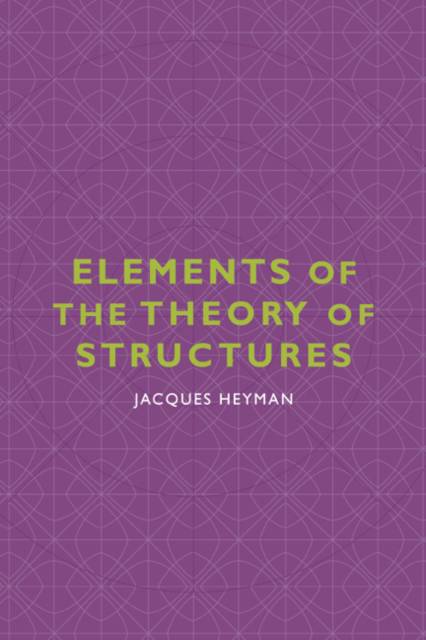
- Afhalen na 1 uur in een winkel met voorraad
- Gratis thuislevering in België vanaf € 30
- Ruim aanbod met 7 miljoen producten
- Afhalen na 1 uur in een winkel met voorraad
- Gratis thuislevering in België vanaf € 30
- Ruim aanbod met 7 miljoen producten
Zoeken
€ 230,95
+ 461 punten
Uitvoering
Omschrijving
A good grasp of the theory of structures--the basis by which the strength, stiffness and stability of a building can be understood--is fundamental to structural engineers and architects. Yet most modern structural analysis and design is carried out by computer, with the user isolated from the processes in action. This book provides a broad introduction to the mathematics behind a range of structural processes--to help today's structural engineers and practicing architects gain a better intuitive understanding of the subject. The basic structural equations have been known for at least 150 years, but modern plastic theory has opened up a fundamentally new way of advancing structural theory. Paradoxically, the powerful plastic theorems can be used to examine "classic" elastic design activity, and strong mathematical relationships exist between these two approaches. This lucid volume is valuable for anyone who wishes a deeper knowledge of the structural analysis and design of buildings.
Specificaties
Betrokkenen
- Auteur(s):
- Uitgeverij:
Inhoud
- Aantal bladzijden:
- 152
- Taal:
- Engels
Eigenschappen
- Productcode (EAN):
- 9780521550659
- Verschijningsdatum:
- 13/06/1996
- Uitvoering:
- Hardcover
- Formaat:
- Genaaid
- Afmetingen:
- 158 mm x 239 mm
- Gewicht:
- 367 g

Alleen bij Standaard Boekhandel
+ 461 punten op je klantenkaart van Standaard Boekhandel
Beoordelingen
We publiceren alleen reviews die voldoen aan de voorwaarden voor reviews. Bekijk onze voorwaarden voor reviews.








